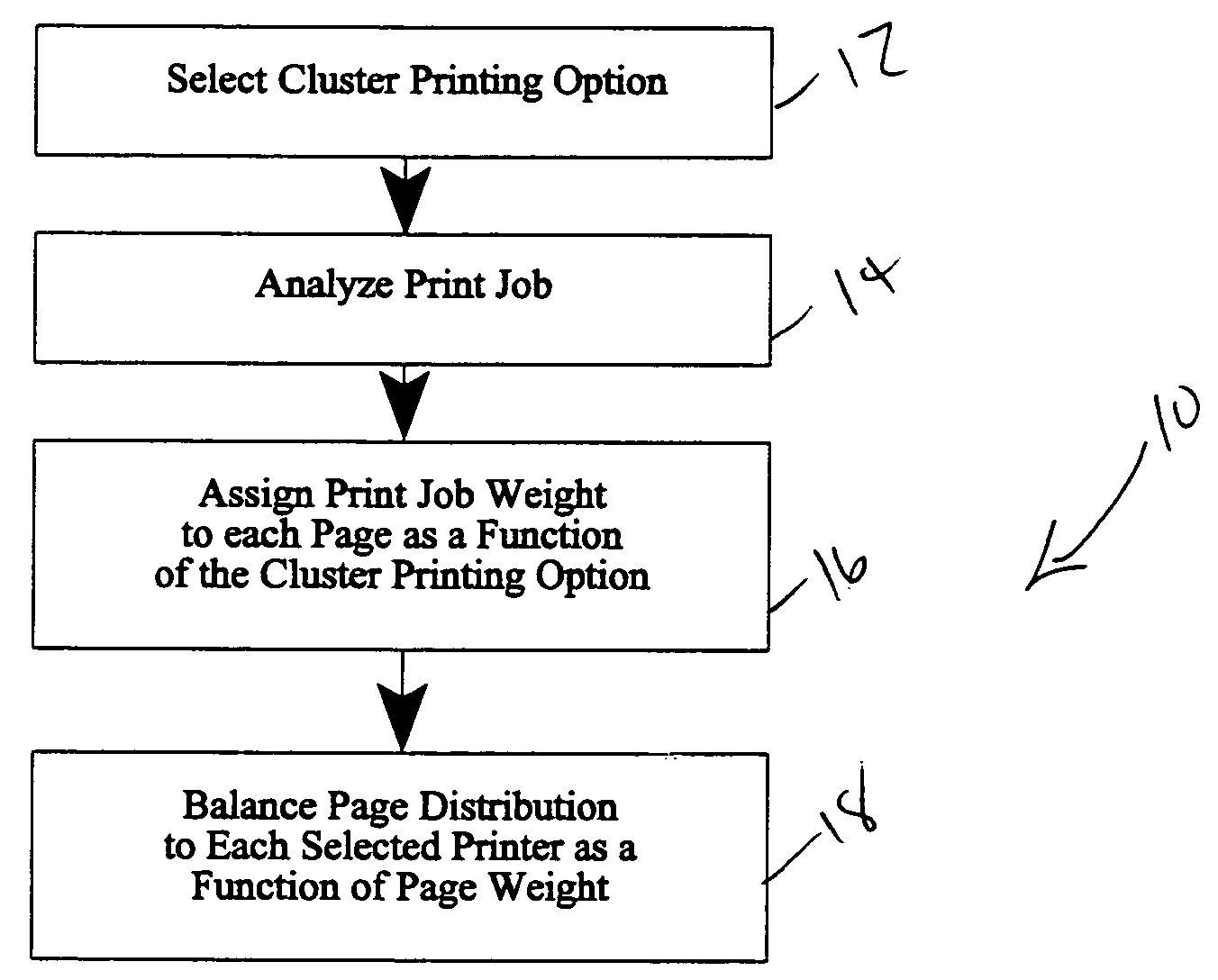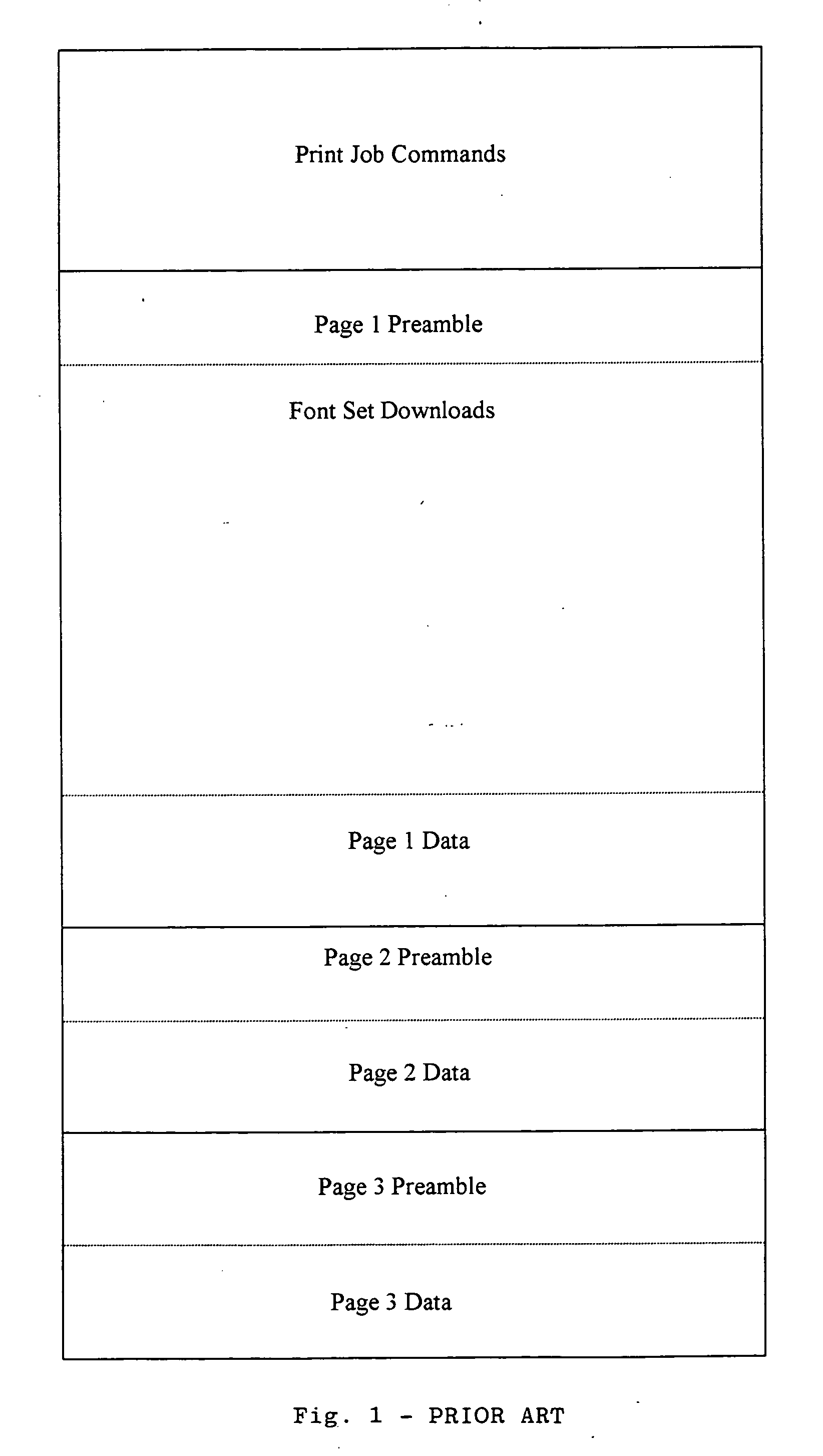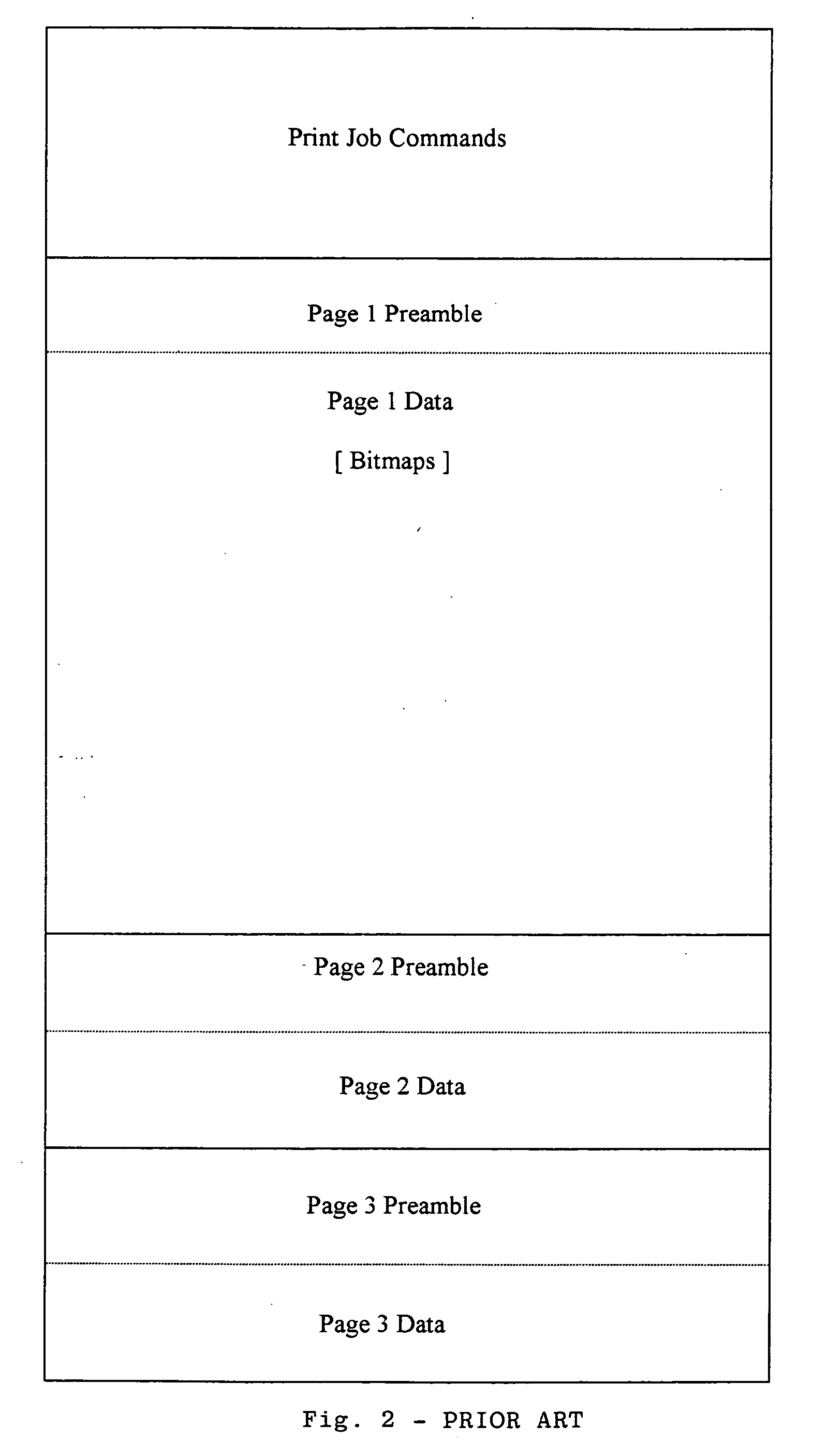Load balanced document splitting by weighting pages
a document splitting and page technology, applied in the direction of digital output to print units, instruments, digital computers, etc., can solve the problem of unbalanced page distribution to the corresponding printer, and achieve the effect of reducing the uneven distribution of load
- Summary
- Abstract
- Description
- Claims
- Application Information
AI Technical Summary
Benefits of technology
Problems solved by technology
Method used
Image
Examples
Embodiment Construction
[0020] The invention improves the problem of load balancing a document split across multiple printers, such that each printer completes its portion of a print job at the same, or near, the same time, ie., substantially simultaneously. Ideally, if all printers receive a distributed portion of a print task at the same time, all printers will complete the printing of their distribution at the same time.
[0021] An important feature of the method of the invention is to provide a printing system with the ability to distinguish pages whose page description language (PDL) interpretation / raster image processor (RIP) requirements will result in an uneven distribution of load. The method of the invention disclosed herein assigns a print job weight to each page that approximates the proportional load-to-PDL interpretation / RIP in the printing device. The pages are distributed to each of the user-selected printers as a function of the assigned page weight. Three weighting methods are disclosed as...
PUM
 Login to View More
Login to View More Abstract
Description
Claims
Application Information
 Login to View More
Login to View More - R&D
- Intellectual Property
- Life Sciences
- Materials
- Tech Scout
- Unparalleled Data Quality
- Higher Quality Content
- 60% Fewer Hallucinations
Browse by: Latest US Patents, China's latest patents, Technical Efficacy Thesaurus, Application Domain, Technology Topic, Popular Technical Reports.
© 2025 PatSnap. All rights reserved.Legal|Privacy policy|Modern Slavery Act Transparency Statement|Sitemap|About US| Contact US: help@patsnap.com



